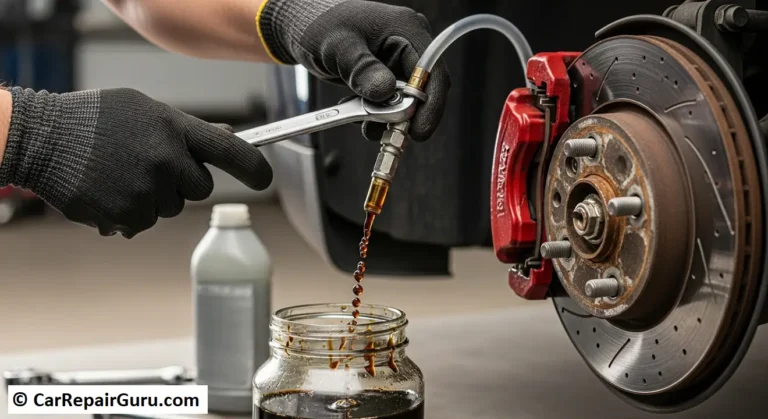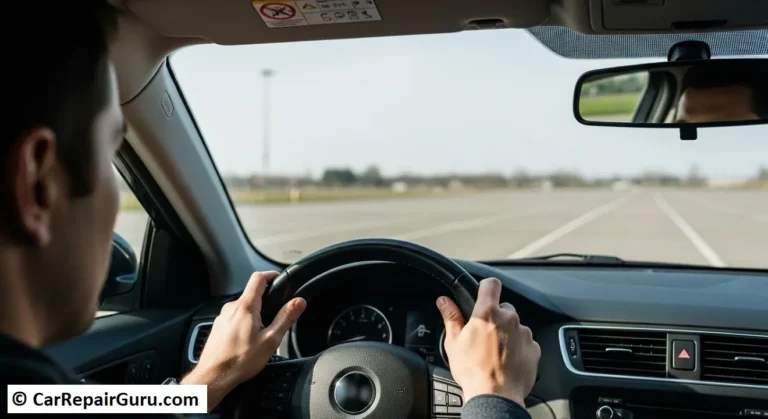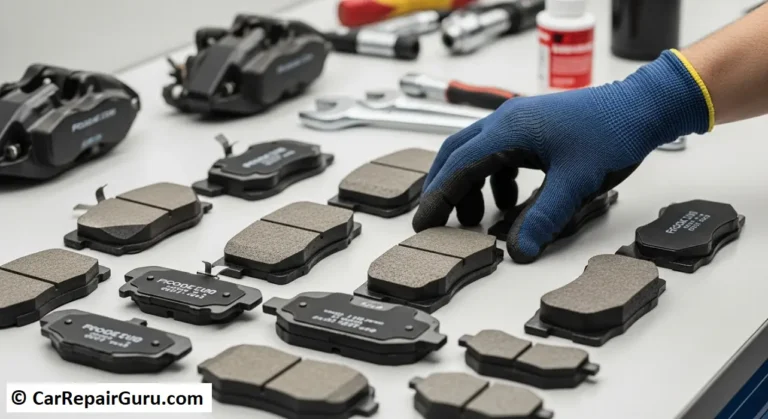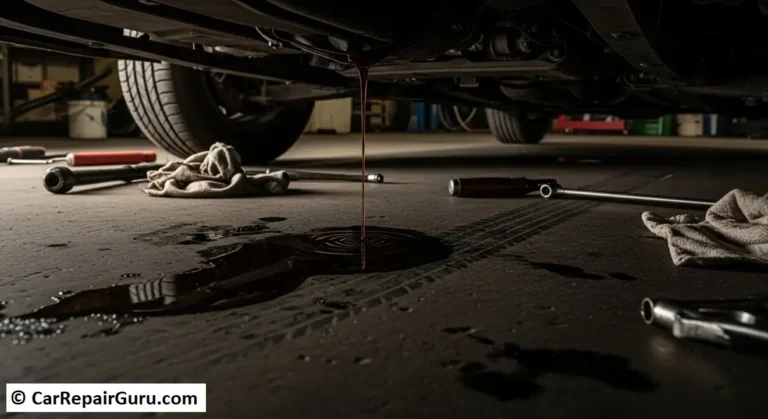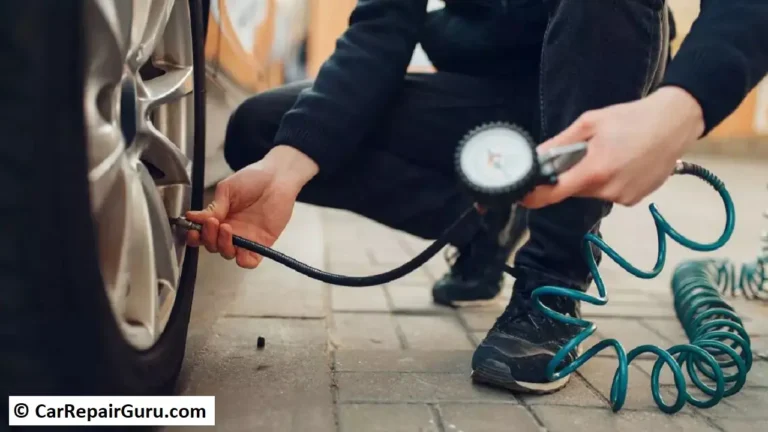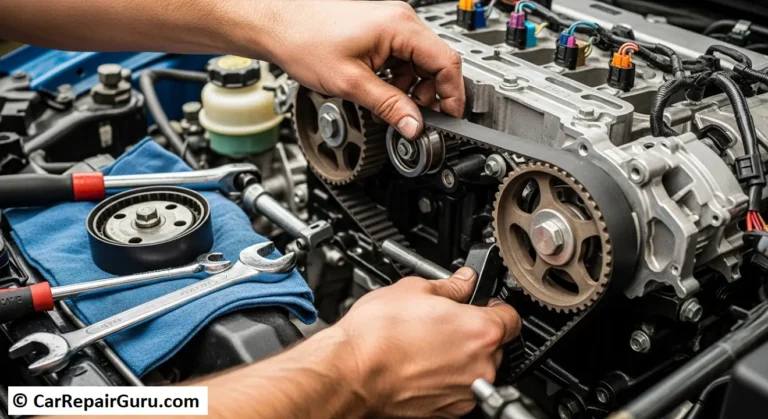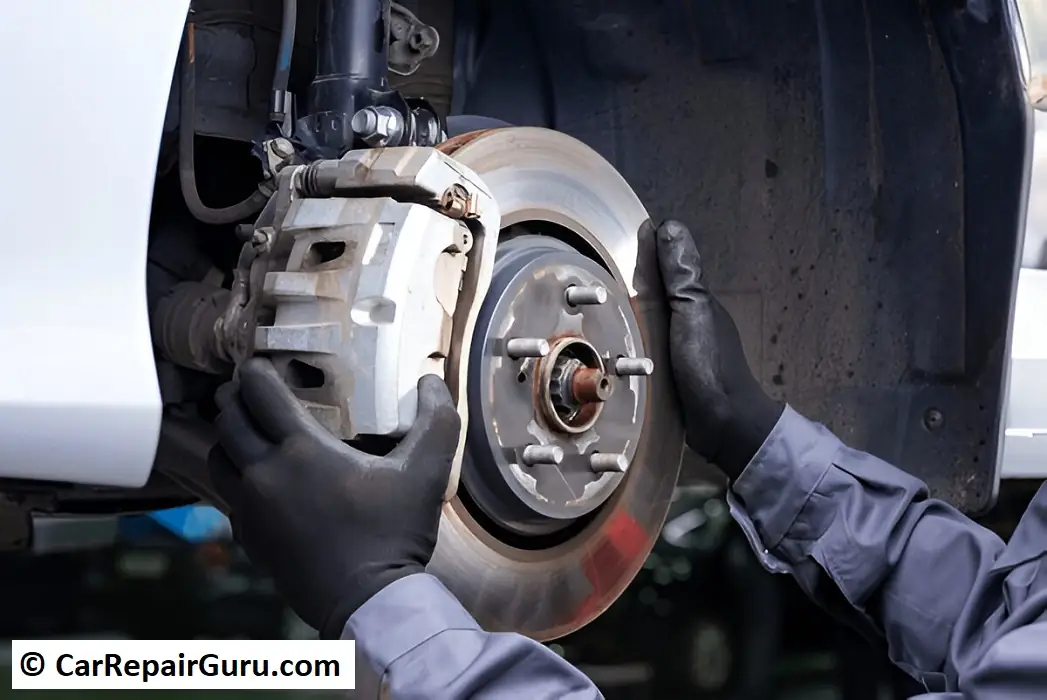
That slight pull to one side when you brake? The faint burning smell after a long drive? These aren’t just minor annoyances—they are critical warning signs that your brake caliper may be failing. Ignoring them is a gamble with your safety and your wallet.
A stuck or failing caliper can quickly lead to warped rotors, destroyed brake pads, and a dangerous loss of stopping power. In this definitive guide, the Guru will give you the knowledge to confidently diagnose the symptoms, understand the causes, and decide on the right repair. Let’s get your brakes back to 100%.
What Is a Brake Caliper and What Does It Do?
Think of the brake caliper as the muscle of your car’s disc brake system. It’s the part that squeezes the brake pads against the spinning brake rotor every time you hit the brakes. That pressure creates friction—and friction is what slows your car down.
Located near each wheel, the caliper wraps around part of the rotor like a clamp. When you press the brake pedal, hydraulic pressure from the brake fluid activates the caliper pistons. These pistons then push the brake pads onto the rotor’s surface, creating the resistance needed to stop the wheel from turning.
Without a properly working brake caliper, your braking system simply can’t do its job. You might experience uneven braking, longer stopping distances, or even complete brake failure in extreme cases. That’s why understanding how calipers work—and keeping them in good shape—is key to staying safe behind the wheel.
Common Symptoms of Brake Caliper Problems
Catching issues early is the first step in fixing brake caliper problems before they become dangerous or expensive. Fortunately, your car gives you warning signs—if you know what to look (and listen) for.
One of the most noticeable symptoms is when your vehicle pulls to one side while braking. This often means one caliper is working while the other is stuck, causing uneven force on the wheels. In fact, a stuck brake caliper is one of the most common and overlooked causes of braking issues.
Another red flag? Uneven brake pad wear. If one pad is wearing out much faster than the other, the caliper might be applying constant pressure—even when you’re not braking.
A burning smell while driving, especially after a stop-and-go trip, could also point to overheating caused by a seized caliper. Combine that with a high-pitched squealing or grinding noise, and your brakes are clearly trying to tell you something’s wrong.
Lastly, you might just feel it: reduced braking performance. If your car doesn’t stop as quickly or smoothly as it used to, it’s time to start fixing brake caliper problems before they compromise your safety.
Listening to these signs can help you spot and start fixing brake caliper problems before they get worse.
Why Brake Calipers Fail: The Top 3 Culprits
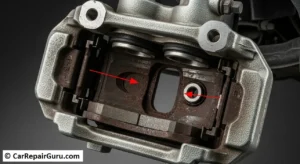
Understanding what leads to caliper trouble is just as important as recognizing the symptoms. Most brake caliper problems don’t happen overnight—they develop over time due to a mix of environmental and mechanical factors.
One of the most common culprits is corrosion or rust. Over time, moisture and road salt can eat away at the caliper housing or piston, leading to sticking or uneven movement. When corrosion builds up, you’re more likely to deal with a stuck caliper piston—a leading cause of poor braking performance.
Another often-overlooked issue is damaged caliper pins or slides. These components help the caliper move smoothly. When they become worn or dirty, the caliper can seize or apply uneven pressure, wearing out your brake pads faster than usual.
Lack of brake fluid maintenance also plays a big role. Old or dirty fluid leads to brake fluid contamination, which can damage seals and reduce hydraulic pressure. Without that pressure, the caliper piston can’t function properly.
In some cases, failure results from worn out components—normal wear that comes from years of braking. But even wear and tear can be slowed down with proper care.
Spotting these causes early is a smart move toward fixing brake caliper problems before they lead to costly repairs—or worse, a dangerous situation on the road.
How to Diagnose Brake Caliper Problems
If you suspect something’s off with your brakes, it’s time for a proper brake system check. Knowing how to inspect brake calipers can help you confirm whether you’re dealing with minor wear or a more serious issue—like a stuck caliper that needs immediate attention.
Start with a visual inspection. Safely jack up your vehicle, remove the wheel, and take a good look at the caliper and surrounding components. Look for signs of rust, uneven brake pad wear, or leaking brake fluid. If one side looks significantly different from the other, that’s your first clue.
Next, test the caliper piston movement. With the caliper off, gently press the piston back using a caliper tool or C-clamp. If it resists, moves unevenly, or is completely seized, the piston may be corroded or damaged—one of the most common causes of caliper failure.
To complete the diagnosis, you’ll need basic tools: a jack, wrench set, and a caliper compression tool. These are often enough to perform an accurate brake inspection right in your own garage.
By diagnosing a stuck caliper early on, you can avoid major repairs and ensure your brakes respond the way they should—every single time.
Fixing Brake Caliper Problems – DIY or Mechanic?
When it comes to fixing brake caliper problems, the good news is that many minor issues can be handled at home with the right tools and a bit of patience. But there are times when calling in a pro is the smartest—and safest—choice.
DIY Fixes: How to Fix a Brake Caliper
If your caliper isn’t too far gone, here’s a basic approach to tackling the job yourself:
- Remove the wheel and caliper – Start by safely lifting the vehicle and removing the wheel. Unbolt the caliper carefully, making sure not to stretch or damage the brake hose.
- Clean or replace stuck parts – Use a wire brush and brake cleaner to remove rust or grime. If the caliper piston is seized, try carefully compressing it with a caliper tool.
- Lubricate the slide pins – Apply high-temp brake grease to ensure smooth caliper movement.
- Reinstall and test – Bolt everything back in place, pump the brakes to restore pressure, and take a slow test drive.
When to See a Mechanic
- Deep corrosion or pitting on the caliper body or piston
- Brake fluid leakage—a sure sign of internal seal failure
- Complete caliper failure where no pressure builds at all
In these cases, a caliper replacement or full system inspection is usually necessary. Don’t gamble with your safety—if in doubt, let a certified mechanic handle it.
Whether you’re doing it yourself or calling a pro, the key to fixing brake caliper problems is acting quickly before the damage spreads.
How Much Does It Cost to Fix a Brake Caliper?
The cost to fix a brake caliper varies significantly based on your approach.
- DIY Cost: If you do it yourself, you’re only paying for parts. A remanufactured caliper typically costs between $50 and $150. Add another $20-$40 for brake fluid, grease, and new pads. You could potentially complete the job for under $200.
- Professional Repair Cost: Taking it to a shop will cost more. Labor is the biggest factor. Expect to pay anywhere from $250 to $600 or more per caliper, depending on your vehicle’s make and model and local labor rates. This price often includes new pads and a brake fluid flush.
Keep Your Calipers Healthy: Essential Maintenance from the Guru
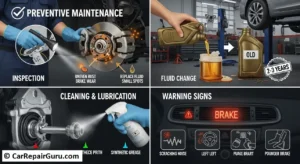
The best way to avoid the hassle and cost of fixing brake caliper problems is to stop them before they start. With just a bit of routine care, you can prolong caliper life and keep your entire brake system in peak condition.
Start with regular brake checks. At least twice a year—or every time you rotate your tires—inspect the calipers, pads, and rotors for wear or damage. Look for uneven pad wear, rust buildup, or signs of leaking fluid.
Next, don’t forget your brake fluid changes. Old or dirty brake fluid can lead to contamination and internal corrosion, which wears out caliper components over time. Replacing brake fluid every 2–3 years is one of the most overlooked but powerful brake maintenance tips.
Occasionally cleaning components—especially caliper slide pins—can go a long way in keeping everything moving freely. Use brake cleaner to remove grime and lubricate where needed.
Lastly, always listen for early warning signs. Strange noises, pulling to one side, or a spongy pedal could all point to issues brewing under the surface.
By staying on top of these small tasks, you’ll reduce the risk of bigger repairs and extend the life of your brakes—saving both time and money down the road.
A Final Word on Safety
Brake caliper problems might start with a slight pull or a faint noise, but they are a direct threat to your vehicle’s stopping power. We’ve covered the telltale signs, the root causes, and the steps for diagnosis and repair. The knowledge you now have is your first tool in preventing a minor issue from becoming a dangerous failure.
Never gamble with your brakes. Whether you’re performing a DIY inspection or handing the keys to a trusted mechanic, proactive maintenance is non-negotiable. Regular checks and clean brake fluid aren’t just about saving money on future repairs.
They’re about ensuring your car can protect you, your passengers, and everyone else on the road. Drive smart, and stay safe.
Frequently Asked Questions About Brake Calipers
Can I drive with a bad brake caliper?
It is extremely unsafe and not recommended. A malfunctioning caliper severely compromises your ability to stop, can cause you to lose control of the vehicle, and can lead to catastrophic brake failure.
Should I replace brake calipers in pairs?
Yes, it is highly recommended. Brake components should be replaced in pairs (both front or both rear) to ensure balanced and even braking performance. A new caliper will behave differently than an old one, which could cause pulling or instability.
What causes a brake caliper to seize?
The most common causes are rust and corrosion, especially from road salt and moisture. Over time, debris can tear the rubber boots, allowing contaminants to seize the piston or guide pins. Old, contaminated brake fluid can also contribute to internal corrosion.
How long do brake calipers last?
Brake calipers are durable components, often lasting between 75,000 and 100,000 miles or even longer. However, their lifespan is heavily dependent on driving conditions, climate, and how well the brake system is maintained (e.g., regular fluid flushes).
What’s the difference between a floating and a fixed caliper?
A floating (or sliding) caliper has pistons on only the inboard side and moves on guide pins to apply pressure. This is the most common type on passenger cars. A fixed caliper doesn’t move; it has pistons on both sides that clamp down on the rotor. These are typically found on high-performance and heavy-duty vehicles.
